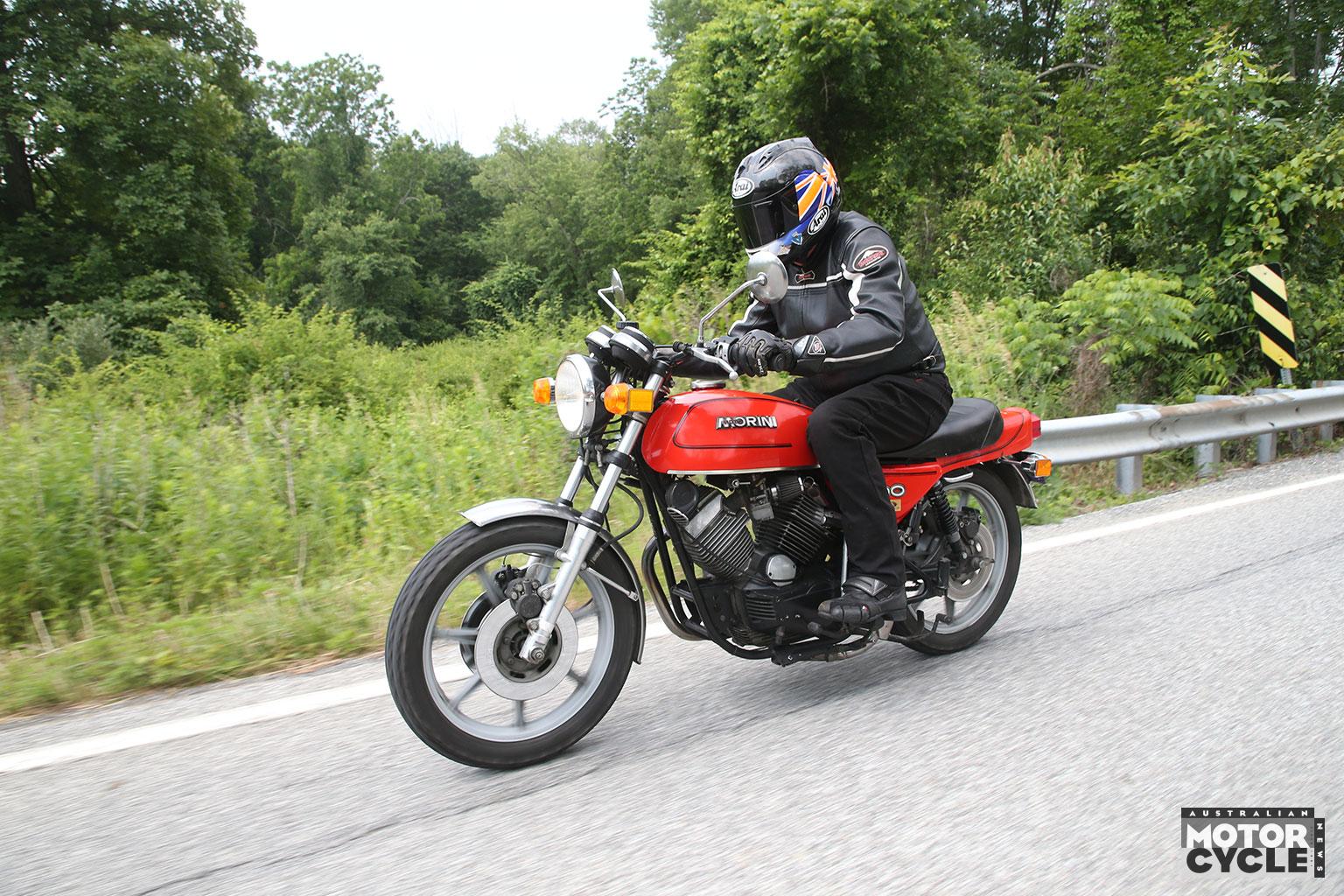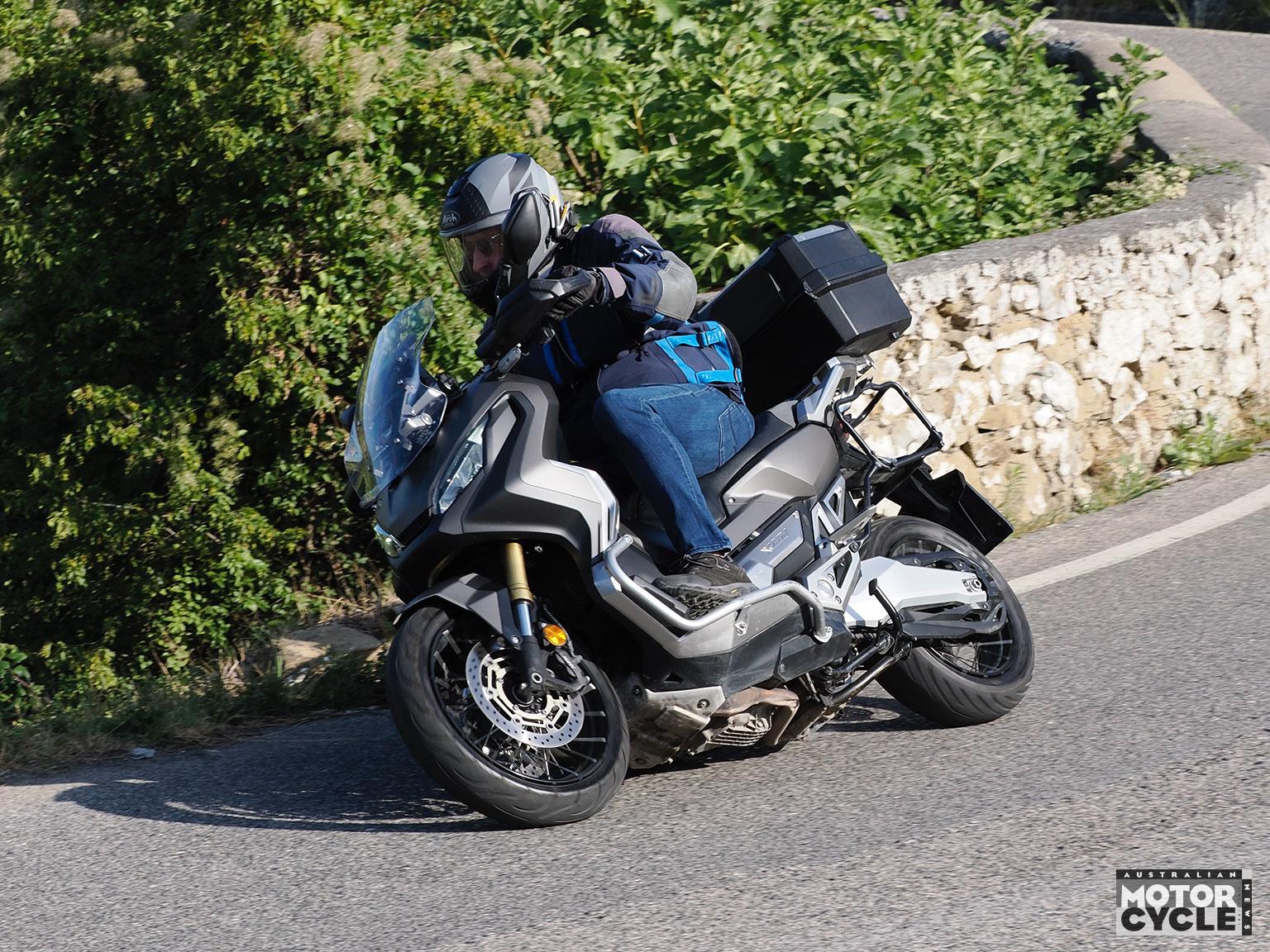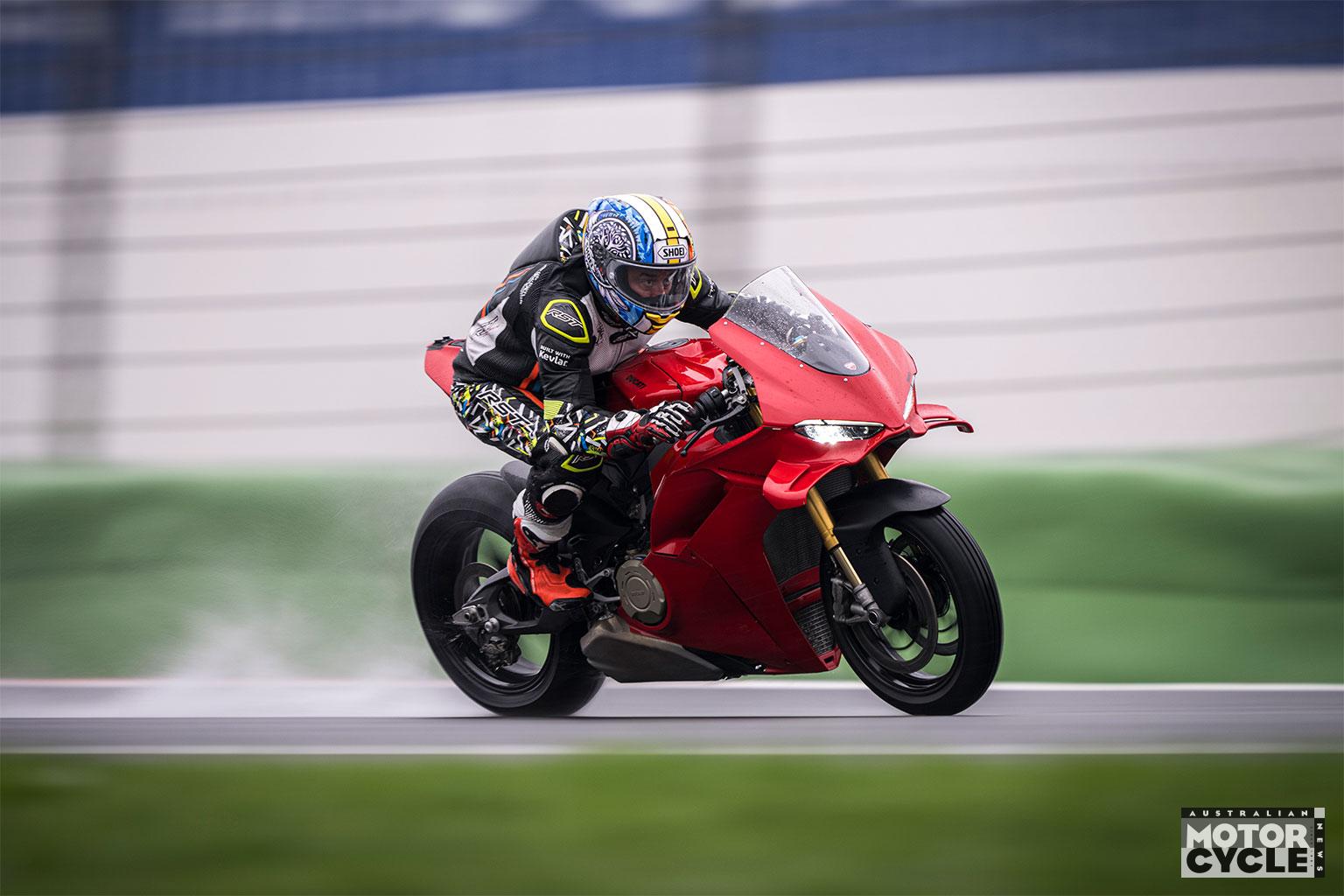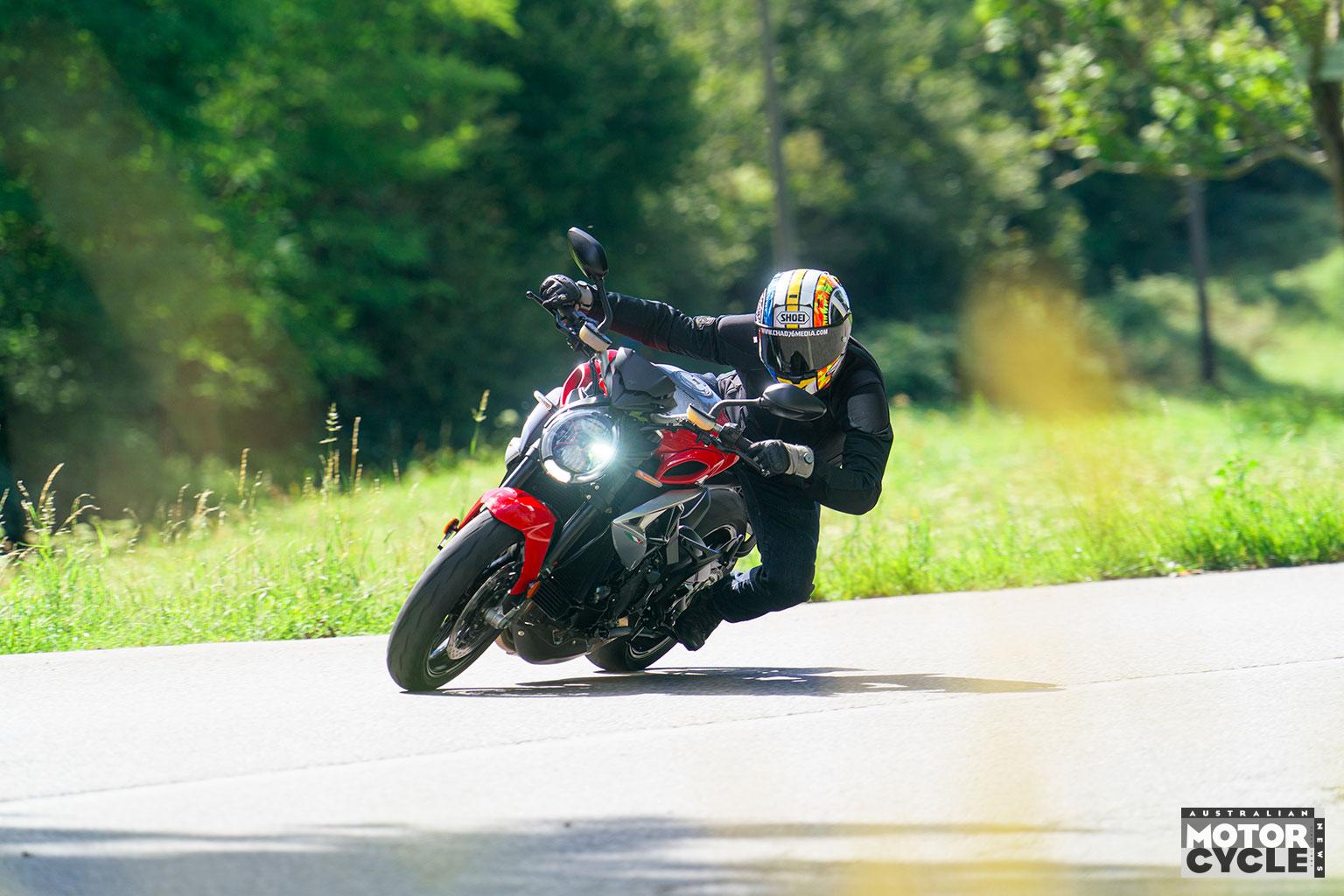There’s no doubt the Kawasaki Eliminator has a big job ahead of it; the LAMS sales battleground is more competitive than ever with new riders able to select from a huge range of bikes covering just about every market segment, including dirtbikes, sportsbikes, nakeds and, of course, cruisers. In the 500cc cruiser segment alone there are several options to choose from including the Benelli 502C, the Harley-Davidson X500, the CFMoto 450 CL-C and the Honda CMX500. These have now been joined by the Kawasaki Eliminator and Eliminator SE models, the latter of which is tested here.
The Eliminator costs $9009 plus on-road costs while the SE is $500 more at $9509 plus ORC. For comparative purposes, the CFMoto 450 CL-C is a bargain at $8790 ride away, the ‘base-spec’ Eliminator equates to around $10,400 ride away, the Benelli 502C is $10,590 ride away, the Eliminator SE comes in at about $11,200 ride away, the Honda CMX500 is about $11,400 ride away and the Harley-Davidson X500 is $11,495 ride away.

So what do you get for your money? The Eliminator is a pretty basic bit of kit but that is part of the cruiser appeal and, to my eye, it’s one of the better looking bikes in the segment. It’s powered by the same liquid-cooled 451cc parallel twin used in the Ninja 500, which has a strong enough bottom-end and midrange that Kawasaki saw no need to mess around with the state tune for use in a cruiser application, so claimed peak output remains at 33.4kW (44.8hp) at 9000rpm and 42.6Nm at 6000rpm.
The engine is mounted in a steel tube trellis frame and is a stressed member, with the swingarm mounting plate bolted directly to it. There’s a conventional 41mm fork up front and twin rear shocks with preload adjustment. Brakes consist of a single 310mm disc up front and a 240mm disc at the rear, both gripped by twin-piston calipers, while the wheels are 18-inch front and 16-inch rear, with 130/70-18 and 150/80-16 IRC Grand High Speed rubber. There is, of course, ABS front and rear, but that’s it for electronic aids, and while there’s LED lighting all around, the speedo is a simple LCD affair, albeit with Bluetooth connectivity that allows you to monitor vehicle info and a riding log on your phone, and see phone calls and messages on the bike’s LCD display. The $500 premium for the Eliminator SE adds an old-school-cool headlight cowl, rubber fork gaiters, a USB-C power outlet, a slightly different seat and special Metallic Matte Carbon Gray/Flat Ebony or Candy Steel Furnace Orange/Ebony colour schemes; the base model comes in Pearl Robotic White.

Riders are greeted with a super accessible 735mm seat height and the Eliminator SE has a light 177kg kerb weight (1kg up on the base model). For mega-shorties there’s an optional low seat that drops height to 715mm, while taller riders can opt for a higher seat at 765mm. The standard seat is wide and well padded, although there’s not a lot of room to slide backwards.
Although it looks quite high, the reach to the handlebar is not a big stretch and the riding position is upright and comfortable, and ideally suited to threading your way through traffic. The handlebar itself is surprisingly narrow and the mirrors do not extend beyond the ’bar’s width, making this little cruiser one of the best lane-splitters on the market.
You could throw a pillion on the back, but the seat is small and not particularly comfy, with nothing to grab hold of, so short trips around town would be about it for two-up riding. There’s nothing of note to tie luggage to, either, so you’ll need to run a backpack or tank bag, or opt for the accessory grab bar or rear carrier.
My ride on the Eliminator SE started off with a run through heavy traffic and, as mentioned, lane splitting was a breeze thanks to the bike’s narrow handlebar and short mirror arms. The engine delivers ample urge from down low so you don’t have to work the gearbox to get along at a decent clip. Having said that, the six-speed ’box is buttery-smooth and the clutch is light and progressive, making shifts both up and down the ratios a delight.
The engine gets a bit buzzy around the 5000rpm mark, which is where it’s at when cruising at 100km/h in top gear. But it’s not a deal breaker and you only need to give it a few more revs, or back off a bit, and it soon smooths out.
There’s enough grunt on tap to easily overtake at highway speeds without dropping down from sixth, but if you want to drop a couple of cogs the engine will willingly rev beyond 10,000rpm.
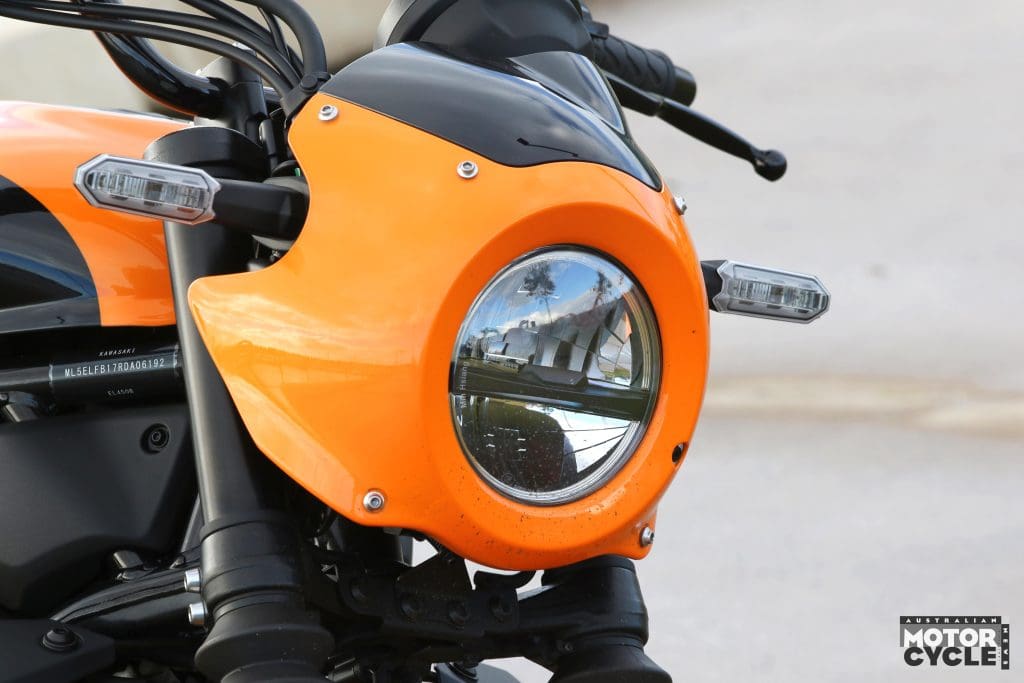
Incidentally, at highway speeds I experienced minimal buffeting around my helmet, which I thought was pretty good for a cruiser with no fairing or screen, and this had me wondering if the headlight cowl had something to do with it. Regardless if it did or not, it definitely gives the SE a sportier look than the base model Eliminator.
One thing I don’t like the look of is the matt-black muffler, which scuffs easily, looks like a cost-saving exercise and is not as attractive as the rest of the exhaust system. It also strangles what engine note there is. I reckon many owners will seek out an aftermarket alternative.
Despite the 18-inch front and the relatively rangy geometry (30° rake and 121mm trail) changes of direction don’t have to be forced; just a bit of a weight shift and a gentle nudge on the ’bar is enough to have the Eliminator pointed where you want it. Ground clearance is decent for a cruiser and the IRC rubber never gave any cause for concern despite the typically wet weather I encountered on test.
The suspension is impressive despite the lack of adjustment and the Eliminator rides well over bumpy surfaces. There’s only 90mm of travel at the rear but the progressive rate shocks rarely bottomed out on test and I had no need to adjust preload from the standard setting. Likewise, the brakes offer more than adequate stopping power and decent feel, and the ABS has good calibration, only doing its thing when I braked hard in the wet to test it.
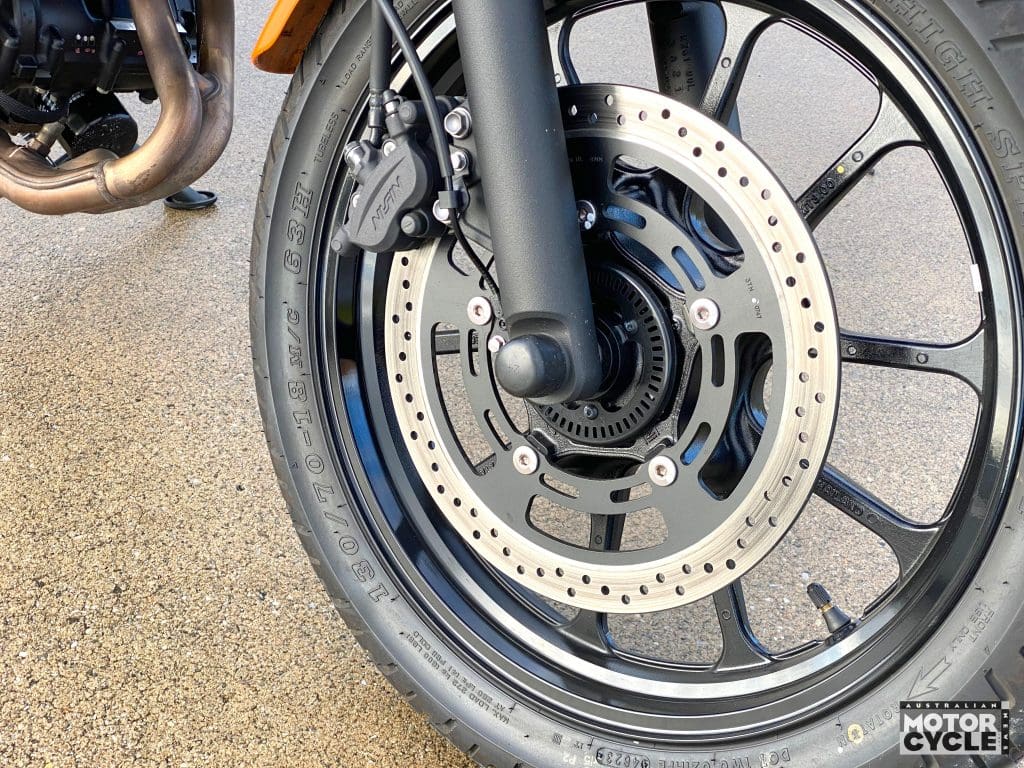
Fuel consumption on test was 4.1L/100km, so despite the small 13-litre tank you could still see around 300 clicks between refills.
Other than the muffler, fit and finish is top notch on the Eliminator, and the Candy Steel Furnace Orange/Ebony paint scheme looks trick. There is no adjustment on the levers, the switchgear is basic, the USB-C outlet looks like an afterthought and the LCD display is a bit meh, but all of that is made up for by the bike’s overall appearance and the enjoyable riding experience.
The Eliminator is a fun and easy bike to ride that is perfectly suited to the new riders it is aimed at. It offers enough performance that I reckon many riders will hang on to it once they have an full licence. In SE trim it’s at the more expensive end of the 500cc cruiser segment, but it’s good enough that it still represents value for money.
PROS: Decent performance, slick gearbox, easy to ride, fantastic lane-splitter and it looks fab.
CONS: The muffler looks like a cost-saving exercise and the USB-C outlet like an afterthought.
THE COMPETITION
KAWASAKI ELIMINATOR SE

$9500+ORC (approx. $11,200 ride away)
33.4kW (44.8hp) at 9000rpm
42.6Nm at 6000rpm
177kg (kerb)
BENELLI 502C

$10,590 ride away
35kW (47hp) at 8000rpm
45Nm at 5000rpm
217kg (dry)
CFMOTO 450CL-C

$8790 ride away
30kW (40hp) at 8000rpm
42Nm at 6250rpm
181kg (kerb)
HARLEY-DAVIDSON X500

$11,495 ride away
35kW (47hp) at 8500rpm
46Nm at 6000rpm
208kg (kerb)
HONDA CMX500

$9349+ORC (approx. $11,400 ride away)
33.3kW (45hp) at 8500rpm
43.3Nm at 6000rpm
190kg (kerb)
SPECIFICATIONS KAWASAKI ELIMINATOR SE
ENGINE
Capacity 451cc
Type Parallel-twin, DOHC
Bore & stroke 72 x 58.6mm
Compression ratio 11.3
Cooling Liquid
Fueling EFI, 2 x 32mm throttle bodies
Transmission Six-speed
Clutch Wet, multi-plate, slipper
Final drive Chain
PERFORMANCE
Power 33.4kW (44.8hp) @ 9000rpm (claimed)
Torque 42.6Nm @ 6000rpm (claimed)
Top speed 170km/h (est)
Fuel consumption 4.1L/100km (measured)
ELECTRONICS
Type Not given
Rider aids ABS
Ride modes Not applicable
CHASSIS
Frame material High-tensile steel
Frame type Tubular trellis
Rake 30º
Trail 121mm
Wheelbase 1520mm
SUSPENSION
Type Not given
Front: 41mm fork, non-adjustable, 120mm travel
Rear: Twin shocks, adjustable preload, 90mm travel
WHEELS & BRAKES
Wheels Cast aluminium
Front: 18 x 3.0
Rear: 16 x 4.0
Tyres IRC Grand High Speed GS-23F
Front: 130/70-18
Rear: 150/80-16
Brakes Nissin
Front: Single 310mm disc, twin-piston caliper, ABS
Rear: Single 240mm disc, twin-piston caliper, ABS
DIMENSIONS
Weight 177kg (wet, measured)
Seat height 735mm
Width 785mm
Height 1140mm
Length 2250mm
Ground clearance 150mm
Fuel capacity 13L
SERVICING & WARRANTY
Servicing First: 600km
Minor: 7600km
Major: 22,800km
Warranty Two years, unlimited kilometres
BUSINESS END
Price $9509 +ORC
(approx $11,200 ride away)
Colour options Candy Steel Furnace Orange/Ebony, Metallic Matte Carbon Grey/Flat Ebony
CONTACT
www.kawasaki.com.au
